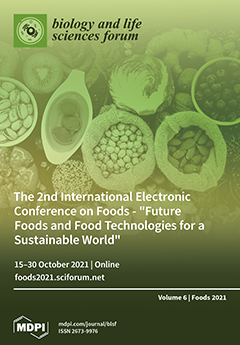First isolated in 2019 via hydrodynamic cavitation (HC) of waste orange peel directly on semi-industrial scale (30 kg of orange processing biowaste in 120 L water) [
1], and subsequently also from waste lemon [
2] and grapefruit [
3] biowaste from the citrus juice industry, “IntegroPectin” is the name we gave to a new family of citrus pectins obtained via HC of (organically grown) citrus industry waste. Easily achieved without the need to use ultrasounds, as happens in acoustic cavitation, the HC-based extraction process carried out in water only is an ideally suited green extraction technology [
4]. Rich in adsorbed citrus terpenes [
5], flavonoids and phenolic acids [
6] concentrated at the pectin’s surface after mildly drying the aqueous extract, the new IntegroPectin pectin family has distinctly higher and broader biological activity in comparison to commercial citrus pectin. For instance, compared to commercial citrus pectin conventionally extracted with hot mineral acid, lemon IntegroPectin shows substantially higher antimicrobial activity [
7]. Furthermore, whereas commercial pectin shows antibacterial activity against Gram-negative bacteria [
8], lemon and grapefruit IntegroPectin share powerful antimicrobial activity against both Gram-positive and Gram-negative ubiquitous pathogenic bacteria such as
Staphylococcus aureus and
Pesudomonas aeruginosa [
3]. Remarkably, grapefruit IntegroPectin is bactericidal for both strains at low concentration [
3]. Lemon IntegroPectin is also a powerful mito- and neuroprotective agent [
9], whereas grapefruit IntegroPectin is both neuroprotective and antiproliferative [
10]. The latter properties are entirely absent in commercial citrus pectin. The antioxidant activity of lemon IntegroPectin measured by its ORAC (Oxygen Radical Absorbance Capacity) exceeding 122.000 μmol TE/100 g [
2], amounts to 60% of the most powerful natural antioxidant extract, namely, freeze-dried olive mill wastewater. The original hypothesis for which the enhanced biological activity of the IntegroPectin is due to the synergistic action of the unique structure of the new RG-I-enriched pectin and the adsorbed bioactive small molecules [
3], has been recently demonstrated studying the controlled release of the latter substances from highly antimicrobial cross-linked IntegroPectin films [
11]. In this lecture, we will present the latest outcomes of collaborative research activities. The conclusions are of significant relevance to biomedical and food science researchers. Pectin indeed is the third most important (in terms of market value) hydrocolloid used by the food industry [
12], and by far the most versatile.
Full article



